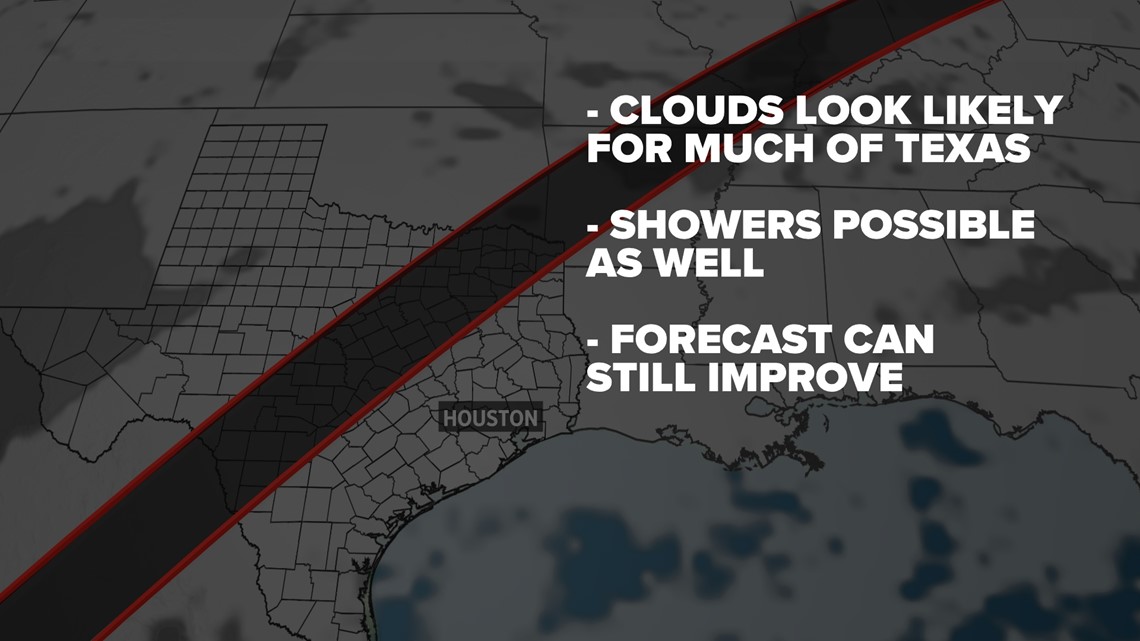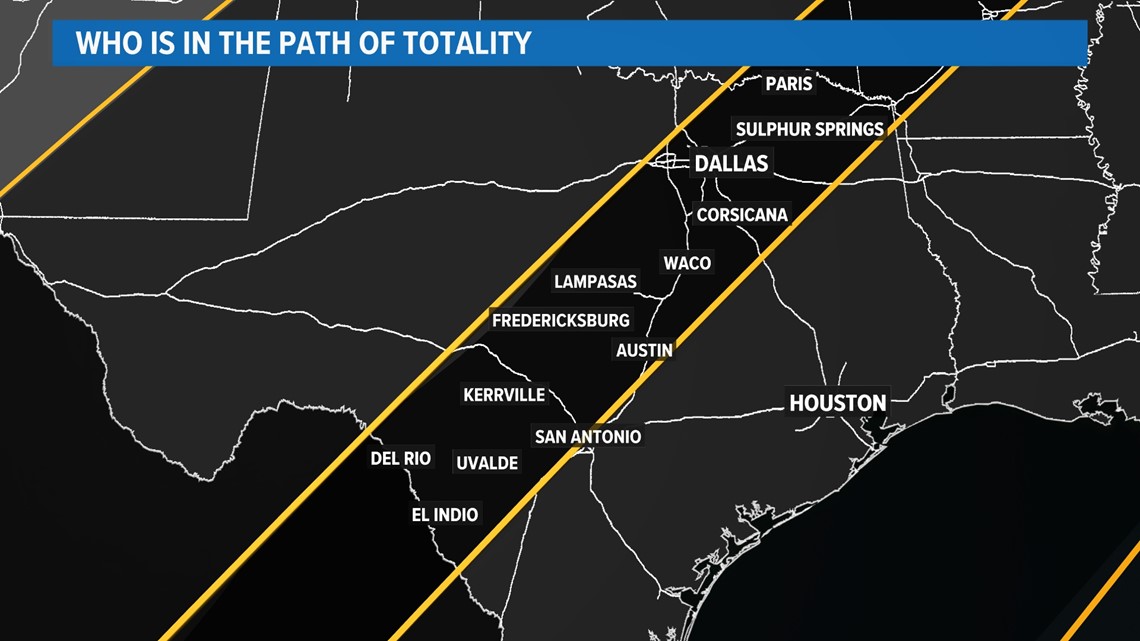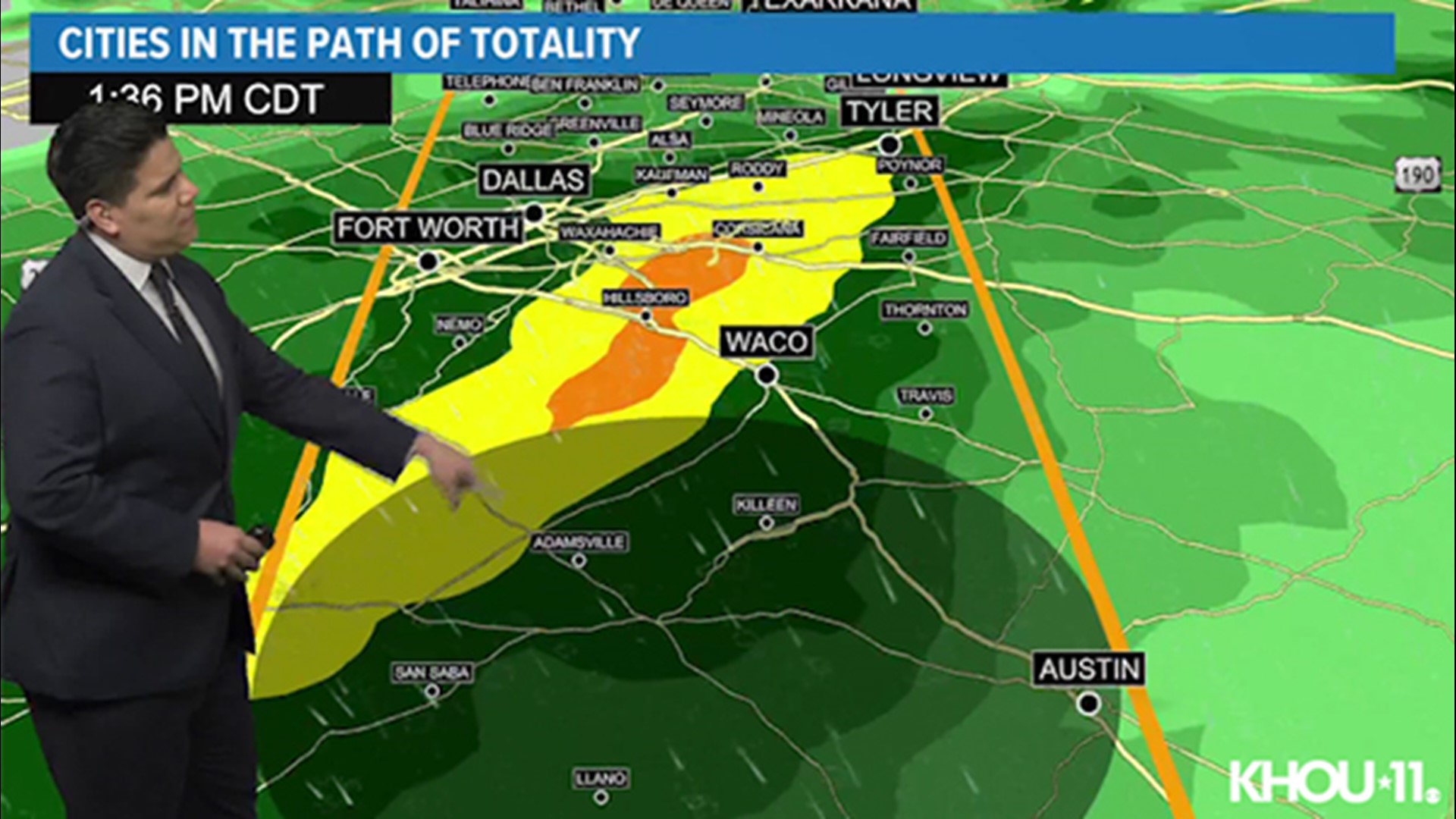HOUSTON — The anticipation is building, but Mother Nature may have other plans when it comes to viewing the upcoming solar eclipse.
Long-range forecast models show cloud coverage across Texas on April 8 with showers, which would hinder the solar eclipse viewing experience.
In fact, it may be difficult to find a cloud-free spot along the entire path of totality as the eclipse makes its move across the United States.
Even if it is cloudy, though, you should still be able to see some of the effects of the eclipse, such as the sudden fall of darkness and at least a slight drop in temperature.






The Lone Star State is the first in the country that the path of totality will cross but it will also go across several other states. Other states in the path of totality include Oklahoma, Arkansas, Missouri, Illinois, Kentucky, Indiana, Ohio, Pennsylvania, New York, Vermont, New Hampshire and Maine. Portions of Canada will also see it.
The eclipse will travel 480 miles through Texas in about 25 minutes, entering at 1:27 p.m. and leaving the state at 1:52 p.m. CT. NASA provided a complete guide to tracking it. The path of totality will enter the country in Eagle Pass.
The path of totality -- where the moon fully covers the sun -- includes plenty of locations throughout Texas. Houston, unfortunately, is outside the show. A 94% partial eclipse will be visible if the clouds allow.


Viewers should always wear eclipse glasses during any solar eclipse, especially if there is no moment of totality.
The last time the U.S. had a total solar eclipse from coast to coast was on Aug. 21, 2017. North America won’t experience totality again until 2033, with Alaska getting sole dibs. Then that’s it until 2044, when totality will be confined to Western Canada, Montana and North Dakota. There won’t be another U.S. eclipse spanning coast to coast until 2045. That one will stretch from Northern California to Cape Canaveral, Florida.

